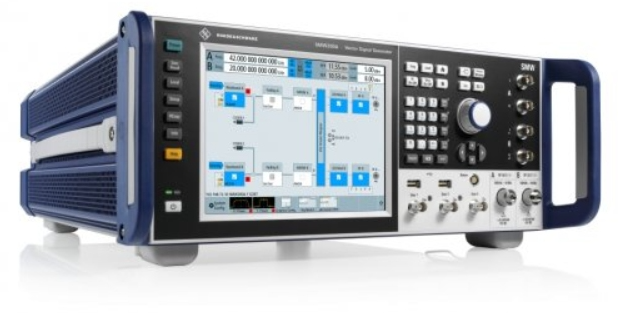The EVM Performance of the New R&S SMW200A and SMM100A Vector Signal Generators Is Noticeably Better
2025-02-21 10:38:38 1016
The industry-leading R&S SMW200A vector signal generator and its mid-range counterpart, the R&S SMM100A, have been upgraded by Rohde & Schwarz ("R&S") with notable enhancements in error vector magnitude (EVM) performance. This makes them ideal for demanding RF applications like amplifier testing as well as 5G NR FR3 R&D testing. Additionally, the R&S SMM100A has been improved to enhance EVM performance, and a new RF linearization software option has been included to optimize EVM at high output power by digital pre-distortion.

Figure. 1
Two of R&S's vector signal generators have been improved: the mid-range R&S SMM100A for superior performance and the R&S SMW200A for demanding applications. The R&S SMW200A boasts new front panels and user interfaces, as well as upgraded microwave technology that improves error vector magnitude (EVM) performance and allows for increased output power for 5G in the frequency range beyond 20 GHz. In order to fulfill the demands of 5G NR FR2 R&D, RF component and module testing, and higher output power in the frequency band above 20 GHz, the enhanced R&S SMW200 is outfitted with better microwave hardware that improves error vector magnitude (EVM) performance.
The RF linearization software option R&S SMW-K575 is included with the improved R&S SMW200A. It uses digital pre-distortion to optimize the EVM at high output power, ensuring great accuracy and stability even when complicated modulation schemes are utilized over the frequency range.
Along with these significant improvements, the R&S SMM100A also features the new low phase noise option R&S SMM-B709, which provides EVM performance better than -53 dB for IEEE 802.11be signals with a bandwidth of 320 MHz.
The R&S SMx-K575 RF linearization option, which can be added through a straightforward servicing and calibration procedure, offers performance improvements to users who have already purchased the SMW200A or SMM100A.
As data rates rise and modulation methods get more intricate, achieving low EVM is essential to guaranteeing the stability and resilience of wireless connectivity applications, according to Gerald Tietscher, R&S vice president of signal sources, power supplies, and general purpose instrumentation. The R&S SMW200A and R&S SMM100A vector signal generator enhancements show our dedication to improving signal source technology. Our dedication to improving signal source technology is demonstrated by the R&S SMW200A and R&S SMM100A vector signal generator upgrades. To satisfy the demands of sophisticated test applications, these instruments provide exceptional EVM performance together with excellent RF characteristics.




